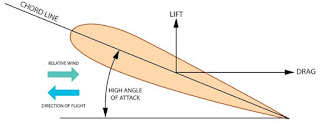Drones in Disaster Response
Introduction:
Disasters, whether natural or man-made, can leave a devastating impact on people and communities. When disasters strike, time is of the essence, and it's essential to provide quick and effective relief efforts. In recent years, drones have become an important tool in disaster response and relief efforts, thanks to their ability to reach inaccessible areas and provide real-time information. In this blog, we will discuss the use of drones in disaster response and relief efforts.
The Use of Drones in Disaster Response:
Drones have revolutionized disaster response efforts by providing critical information quickly and efficiently. During a disaster, drones can survey large areas and provide high-resolution imagery, which can be used to assess damage, identify potential hazards, and locate survivors. Drones equipped with thermal imaging sensors can detect heat signatures, which can be used to locate survivors who may be trapped under debris.
In addition, drones can be used to deliver essential supplies to people in remote and hard-to-reach areas. In areas where road access is limited, drones can be used to deliver food, water, and medical supplies. This is particularly useful in areas where traditional delivery methods are disrupted, such as during a hurricane, earthquake, or flood.
The Use of Drones in Relief Efforts:
Drones have also become an important tool in relief efforts, as they can be used to provide situational awareness to relief workers. Drones can provide real-time images of relief efforts, allowing workers to assess the situation and adjust their efforts accordingly. Drones equipped with cameras can also be used to monitor relief efforts, ensuring that supplies are delivered to the right locations and that relief efforts are reaching those who need them the most.
In addition, drones can be used to conduct search and rescue operations, as they can access areas that are difficult for humans to reach. Drones equipped with high-resolution cameras and thermal imaging sensors can quickly scan large areas and locate survivors who may be trapped or injured.
Conclusion:
Drones have become an essential tool in disaster response and relief efforts. They provide critical information quickly and efficiently and can access areas that are difficult for humans to reach. With the increasing use of drones in disaster response and relief efforts, it's essential to continue to explore new ways to use this technology to save lives and provide support to those in need.
.jpeg)
.jpeg)


Comments
Post a Comment